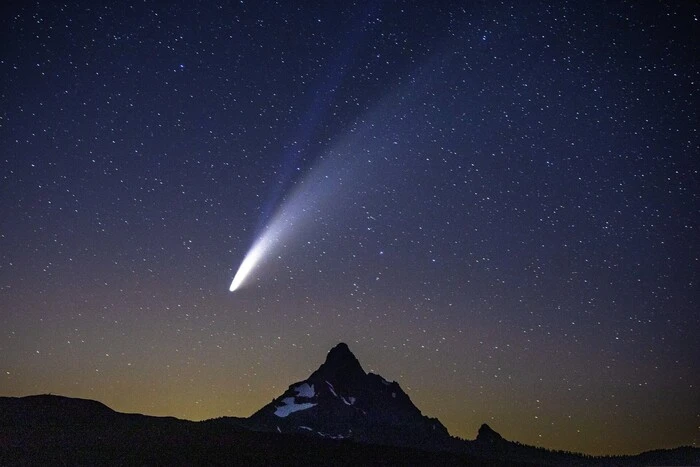In October, Earthlings Will Be Able to Observe the Unique Atlas Comet Without a Telescope.


In September 2024, astronomers and ordinary inhabitants of Earth will be able to observe a spectacular phenomenon: the comet Tsuchinshan-ATLAS C/2023 A3, which is approaching our planet. This is reported by the website .
This comet was discovered by astronomers from the Tsuchinshan Observatory in China in January 2023. It is predicted that its closest approach to our planet will occur on October 11, 2024.
Where and When to Observe
The comet will be visible to the naked eye if the weather is favorable. The best conditions for observation will be during the night of October 10 to 11, 2024. The comet will be visible in the northwest, near the constellation Ursa Major. In particular, it should be noticeable in regions with low light pollution.
Astronomers advise using binoculars or a small telescope for better observation, as the comet may appear as a bright spot with a long tail trailing behind it.
Characteristics and Discovery History
The comet Tsuchinshan-ATLAS C/2023 A3 belongs to the class of short-period comets. Its orbit has a period of about 107 years, which means it will return to the inner part of the Solar System around 2131. Discovered as part of the ATLAS project (Asteroid Terrestrial-impact Last Alert System), it was named in honor of the observatory and the research project.
The comet has a large diameter of approximately 1.5 km, and its nucleus consists of ice and dust. This allows it to glow as it approaches the Sun when the heat starts to evaporate water from the nucleus, forming a bright cometary shell.
Interesting Facts
First Discovery: This comet has been of particular interest because its discovery was the result of observations aimed at identifying potentially hazardous objects for Earth.Return: While many comets return to the Sun after tens or hundreds of years, Tsuchinshan-ATLAS C/2023 A3 has one of the fastest orbits, making it unique among others.Possible Changes: In the coming months, the comet may undergo changes in brightness, so observers should keep track of updates from astronomers.
It is noteworthy that a previously unseen comet in the last 70 years may pass by Earth.
Last year, a unique comet passed by Earth, not seen for 80 thousand years.
The comet, once known as C/2023 A3 (Tsuchinshan-ATLAS), was re-documented in February last year in South Africa, Chile, and Hawaii. Now it is expected to come even closer to Earth, and in September 2024, it will approach the Sun at a distance of 36 million miles.
Read also
- Iran struck five Israeli military targets during a 12-day war – The Telegraph
- NATO Secretary General Predicts New War
- The Occupant From Captivity Called His Mother, But She Made Up a Strange Reason Not to Talk to Him
- A Ukrainian Went to Fight for the Russians, but They Sold Him to the Ukrainian Armed Forces
- Cuban recounts how he became Putin's cannon fodder
- Trump's favorite newspaper appealed to him regarding arms supplies to Ukraine










